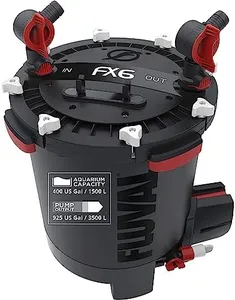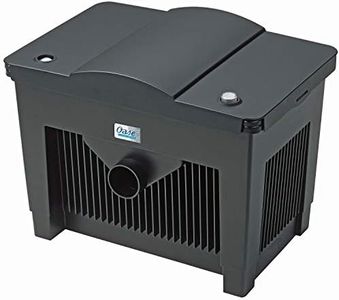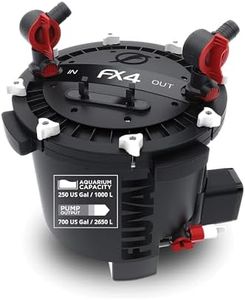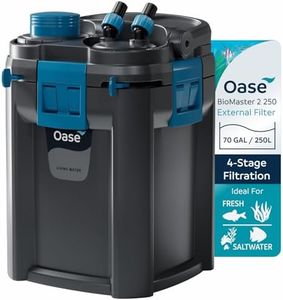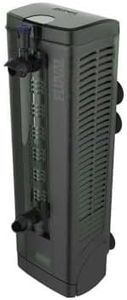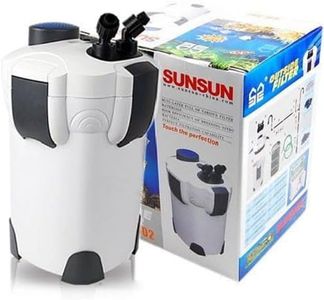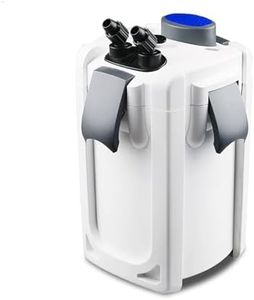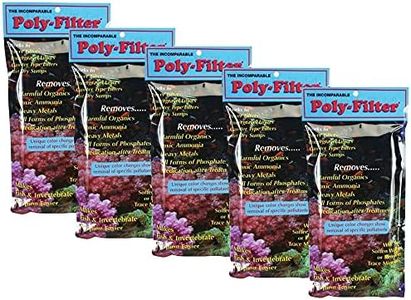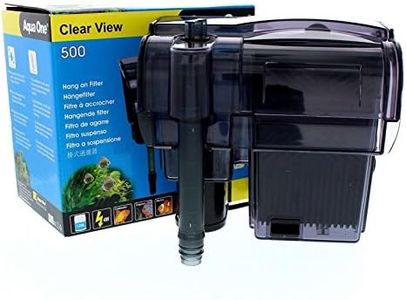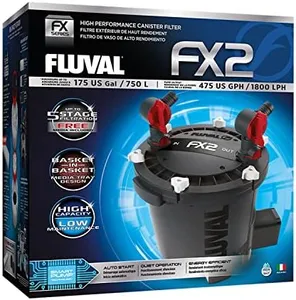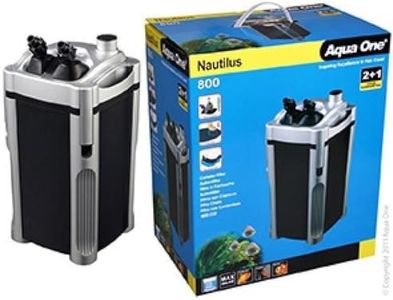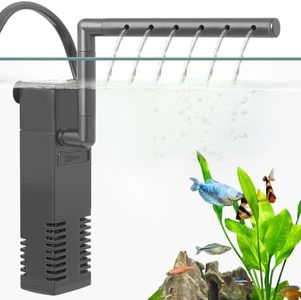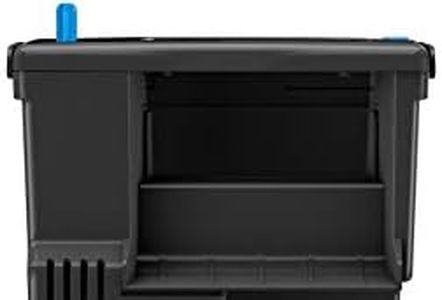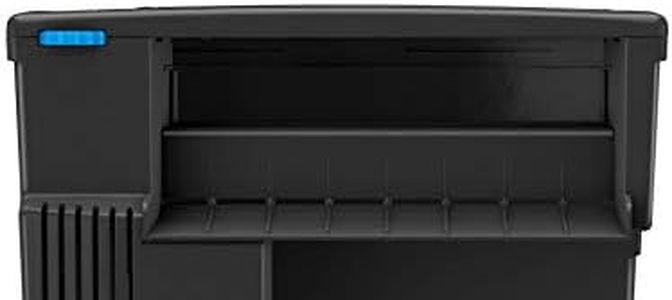We Use CookiesWe use cookies to enhance the security, performance,
functionality and for analytical and promotional activities. By continuing to browse this site you
are agreeing to our privacy policy
10 Best Aquarium Filters
From leading brands and best sellers available on the web.By clicking on a link to a third party's website, log data is shared with that third party.
Buying Guide for the Best Aquarium Filters
Choosing the right aquarium filter is essential for keeping your tank water clean and healthy for your fish and plants. A good filter not only removes visible particles but also helps to control toxins and maintain overall water quality. When picking a filter, it's important to match the type and size to your aquarium's needs so that you don't under- or over-filter. Understanding the key features will help you make the right choice for your setup and ensure a safe environment for your aquatic pets.Filter TypeFilter type refers to the basic design and operating method of the filter, such as sponge, internal, hang-on-back (HOB), canister, or undergravel filters. This matters because each type has different strengths in areas like water flow, ease of cleaning, and suitability for different tank sizes. For example, sponge filters are great for small or breeding tanks, while canister filters are powerful and ideal for larger aquariums. To navigate the filter types, think about the size of your tank, the species of fish, how much space you have, and whether you prefer low maintenance. Pick the type that matches your tank size, fish needs (fragile fry versus active swimmers), and how much time you can dedicate to cleaning.
Flow RateFlow rate is the amount of water a filter can process in one hour, usually given in gallons per hour (GPH) or liters per hour (LPH). This is important because it tells you how often the water in your tank will be filtered, affecting water clarity and fish health. Low flow rates suit small tanks and delicate fish, while high flow rates are better for large or heavily stocked tanks. Typically, you should aim for a filter that can process all of your tank’s water 4 to 6 times per hour. If you have small or slow-swimming fish, stay closer to the lower end; for active or messy fish, or heavily stocked tanks, go higher.
Filter Media StagesFilter media stages refer to how many kinds of filtration a filter can provide: mechanical (removing particles), biological (breaking down wastes with bacteria), and chemical (removing toxins and odors). This matters because more stages mean more thorough water cleaning. Simple filters may only provide mechanical or biological filtration, while more advanced ones offer all three. When choosing, consider what your tank needs: a basic setup may only need two stages, but tanks with sensitive or many fish benefit from all three filtration types. Pick a filter with enough media stages to match your tank’s bioload (the amount of waste produced by your fish).
Ease of MaintenanceEase of maintenance describes how simple it is to clean and replace filter parts, and how often you need to do so. This is important because regular maintenance keeps your filter effective and your tank healthy. Simple filters are quick to clean but may need frequent attention, while complex filters work longer between cleanings but take more time to service. If you prefer a low-maintenance aquarium, look for filters known for easy access to filter media and straightforward cleaning steps. Consider your schedule and patience for cleaning when deciding.
Noise LevelNoise level refers to how much sound the filter makes while running. This matters especially if your aquarium is located in a quiet room, bedroom, or office. Some filters are almost silent, while others can be quite noticeable. Noise tends to increase with larger, more powerful filters or when parts wear out. Think about where your aquarium will be and if noise will be an issue. If peace and quiet is a priority for you, choose a model known for quieter operation.
